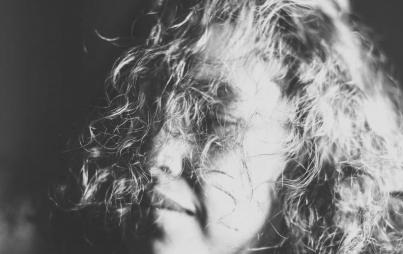
I wavered between pride and self-loathing. Those marks were mine; I had made them.
October 2-8 is Mental Illness Awareness Week.
My arm awkwardly angled downwards into a Waterford crystal pitcher filled with ice cubes and water. My mother hummed a tune as she put wayward dishes into their proper places. I stared out the window at the plants and birds, the willow tree dipping into the swampy patch of my childhood backyard.
“This will prevent scarring,” she said at the sink, rubbing a toile rag over a china plate. “Just keep soaking.”
There had been no conversation about depression or anxiety. There was no telephone call to a doctor.
It was just me, my mother, and expensive glassware.
The dots on my left wrist looked like when I had the chicken pox as a child. They were angry, red, rimmed with white, sore to the touch, slightly itchy. Ever since I had come home from college, I had been burning myself with cigarettes. Gently at first, then more insistently, ramming the edges into my innocent wrist flesh. There was something so infuriating about the skin there, so white and delicately lined with the blue veins branching out like tree limbs. My brain said that was the place to punish, and I obeyed.
After my mom’s prescribed treatment, my left wrist looked like I had nominally triumphed over a skin disease. The ice water did actually help; some of the scarring was minimal.
But three circles stayed.
I wavered between pride and self-loathing. Those marks were mine; I had made them. Like tattoos, they were visual markers of a moment in my life that I felt needed manifestation. Unlike tattoos, they were evidence of serious psychological distress. Yet I showed them off; I garishly told stories to strangers at the nail salon or the supermarket. They were simultaneously beautiful and disgusting. They gave my life meaning and they also reminded me of how easy it was for me to resort to self-harm.
But throughout high school and college, with my tiny pricks and slices, I was invisible. Sometimes that was liberating and other times it was frightening; I was either in control or no one cared.
The first time I was inspired to injure myself was when I was thirteen. I had just read Reviving Ophelia: Saving the Selves of Adolescent Girls, an advice book my mother had hidden on the shelf between some garish ceramic dancing girls, books on cocker spaniels, and her and my father’s decaying wedding cake topper. In the book, a well-meaning psychologist told stories about teenage girls acting out, and self-injury was just one of many ways. I wasn’t the type to climb out the window on a rope made of bed sheets, so self-harm made a lot of sense.
When I decided to act, I took a pink Bic razor to my thigh. I was surprised at how many times I had to press it into my flesh. It left two neat little red railroad tracks, about an inch long, and I was immediately embarrassed and ashamed.
According to The Cornell University Research Program on Self-Injury and Recovery, “self-injury mostly begins in middle adolescence and can last for weeks, months, or years. For many, self-injury is cyclical rather than linear…and many individuals who self-injure report that feeling overwhelming negative emotion or emotional pressure are the most common triggers. Emotional numbness and sadness are also commonly cited.”
There are a few reasons why people self-injure, including a desire to feel in control over one’s body, distract oneself from other issues, self-punish, communicate needs, and to create visible wounds, among other things. Psychologists understand self-injury best as a maladaptive coping mechanism because it provides temporary relief but is not helpful as a long-term solution for stress.
Over the years, I discovered that self-harm was quite common among the girls I knew. It could either be extravagant or quiet. A close friend of mine from college suffering from homesickness once carved her mother’s phone number into her thigh. In my idiocy, I was flabbergasted and envious of that work of art. God, the commitment, I thought. She got all the kind hugs and hair strokes. She was even escorted to the counseling center.
But throughout high school and college, with my tiny pricks and slices, I was invisible. Sometimes that was liberating and other times it was frightening; I was either in control or no one cared.
Governing my occasional cuts and burns was the overwhelming anxiety that I would be accused of attention-seeking behavior. After all, wasn’t self-harm a desperate, pathetic cry for attention?
The fear of being accused of attention-seeking stopped me from getting help.
I remember dancing the delicate waltz of revealing and concealing, my mind whipped into a maelstrom of what was too much and what was just enough evidence of my distress. One angry scratch? Don’t worry; they’ll think it was the cat. A whole host of seared splotches? Cover with a bandage, then camouflage the bandage with a striped tennis band, then shift the tennis band just a tad so the bandage was poking out. That was my perfect solution. I looked like I was trying to cover it and failing; that way, no one could accuse of me attention seeking.
Today, my scars are barely noticeable. Sometimes, I’m angry that I wasn’t more forceful when I was injuring myself because when I talk about this part of my past, people ask to see the evidence. When I offer them my wrist, they squint and seem skeptical, like I’m lying or exaggerating. I guess my mother really knew what she was doing when she stuffed my arm into that Waterford pitcher - at least in terms of scar prevention.
Some scars are meaningful because they come from struggles with physical health or are reminders of exciting adventures.
But mine come from another kind of struggle.
They remind me of my capacity for self-loathing that never quite abates, and the ability of my body to knit together a sloppy kind of forgiveness.








